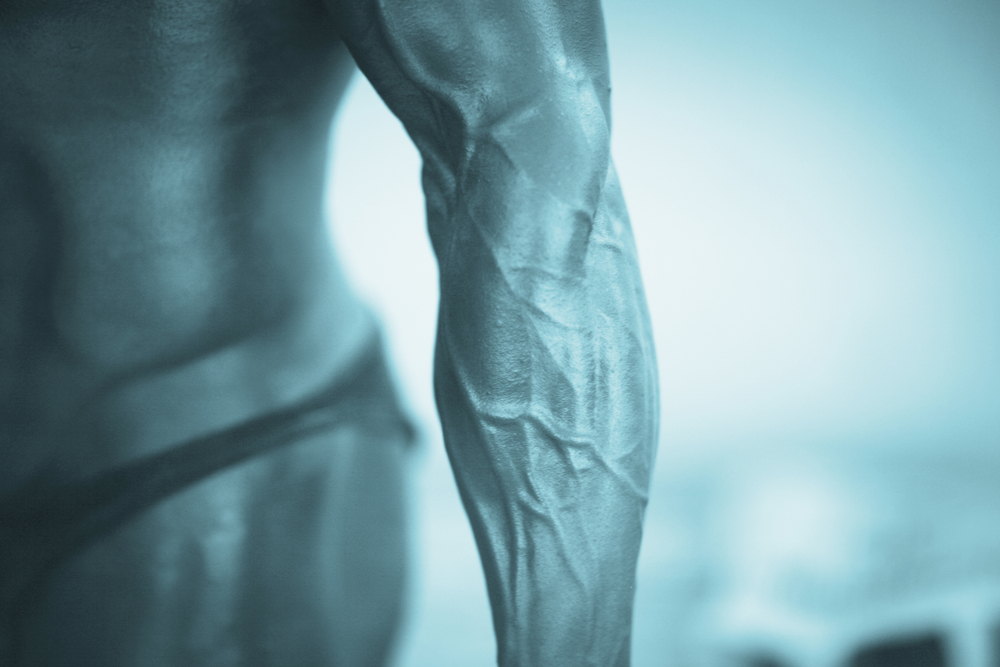While many people obsess over their biceps and triceps, having big arms also involves working your forearms. So, knowing which exercises work your forearms can be of great benefit if you want gunz like Arnie.
In this article, we look at whether chin-ups work your forearms.
We explore whether chin-ups can make your forearms bigger or stronger, whether you can adapt your chin-ups to better target your forearms, or if there are other exercises out there that will be more beneficial to your forearm development.
Let’s get to it!

Do Chin-Ups Work Forearms?
Yes, chin-ups work your forearms.
The muscles in your forearms actually have a few functions to perform.
From wrist movement and finger control (among others), you can see why chin-ups require forearm activation to perform the movement successfully.
While your forearms may not be the primary focus of chin-ups, they certainly have a big part to play in making the movement happen.
Do Chin-Ups Make Your Forearms Bigger?
They might, but they probably aren’t the best choice of exercise for building forearm size.
Although your forearms act as stabilizing muscles by helping you grip the bar, chin-ups work your biceps and back the most.
Your forearms act as a stabilizing muscle by helping you grip the bar securely, and helping with wrist stability too.
Your forearms might not get bigger as a direct result of chin-ups, but the exercise can certainly help add size to them as part of a targeted forearm-building program.
Do Chin-Ups Make Your Forearms Stronger?
Yes, chin-ups will help make your forearms stronger.
Gripping the bar and lifting your bodyweight up takes a lot of effort by multiple muscle groups.
(With your forearms being one of them.)
As your forearms are placed under stress during chin-ups, it makes sense that they’ll get stronger the more chin-ups you do.
Even though your forearms aren’t primarily targeted during the exercise, chin-ups will still help develop good levels of strength in your lower arms.
Why Do Your Forearms Hurt Doing Chin-Ups?
Overtraining
Overtraining is a common cause of pain during exercise.
This is particularly true when thinking about muscle groups like your forearms that are used in so many different movements.
If you’re doing chin-ups after doing arms, chest, or back recently, the chances are your forearms have already worked hard.
Doing chin-ups while your forearms haven’t had enough time to recover can cause pain and discomfort during your training.
Weak Forearms
If you have weak forearms, this could easily lead to pain during chin-ups.
In any exercise, the weakest muscle group will be the one that gives up first and prevents you from carrying on with your training.
As your forearms are placed under quite a bit of stress during chin-ups, having weakness in this area can not only impact your performance, but can also cause pain too.
Injury
Although chin-ups are a relatively safe exercise to perform, it’s still possible to pick up an injury.
If you have an injury in or around your forearms, this can cause pain during chin-ups.
If you experience forearm pain during chin-ups and are worried you have an injury, it’s a good idea to see a medical professional who can advise the best course of action.
How To Target Your Forearms More During Chin-Ups
It can be quite hard to bring your forearms into play more during chin-ups.
However, there are a couple of adaptations you can try that may help target your forearms a little more.
The first is to use a thicker chin-up bar. As this will be harder to grip, your forearms have to put in a lot more effort to grip it securely enough to allow you to lift your bodyweight up to the bar.
You could also use towels hung over the bar to grip instead of gripping the bar itself, like below.
While this changes chin-ups to more of a pull-up exercise, your forearms will come into play more due to the more challenging grip being used.
Do Chin-Ups Work Your Forearms More Than Pull-Ups?
Pull-ups will likely be a better choice of exercise if you want to put greater emphasis on your forearms.
This is mainly due to the underhand grip used in chin-ups, which allows your biceps to do a lot more work than the overhand grip used in pull-ups allows.
If your biceps are working harder in chin-ups, your forearms are placed under less stress, resulting in less progress being made towards your forearm development goals.
Conclusion
In summary:
- Your forearms work effectively during chin-ups.
- If you want to build big forearms, you should focus on forearm-specific exercises rather than chin-ups.
That’s all for this article, but do chin-ups build traps? Or are chin-ups good for lats?
Hope this helped!
Sources
I’ve been in the fitness and strength training industry for nearly a decade. In that time, I’ve gained 30 pounds of muscle, written hundreds of articles, and reviewed dozens of fitness supplements. As for my educational background, I’m a currently studying for my Active IQ Level 3 Diploma in Personal Training.

